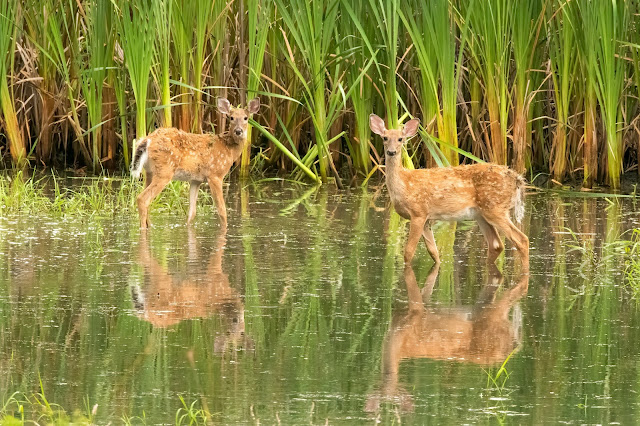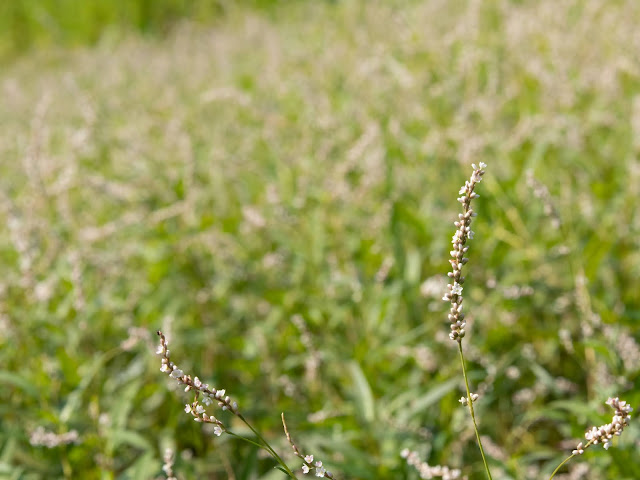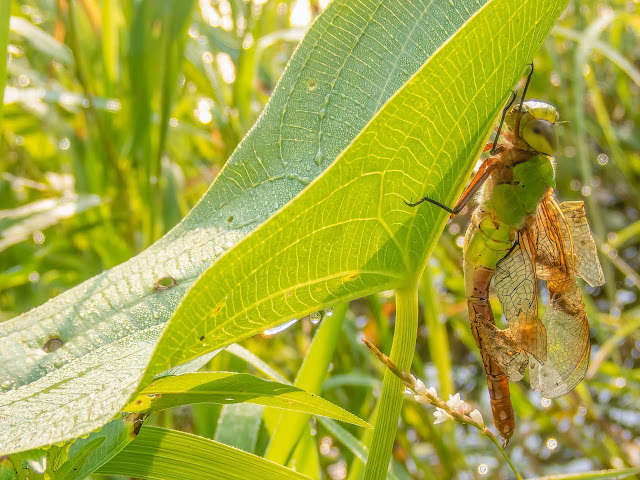"Nature Abhors a Vacuum"

Long-Jawed Spider and Common Green Darner Exuviae, July 17, 2021 As part of my study of the Homer Lake Wetland dragonfly population this year I have been collecting the shed exoskeletons ("exuviae") left behind by the adult dragonflies that emerge from the wetland. These are useful both as rough indicators of the numbers of dragonflies emerging as well as the species of dragonflies successfully emerging. Interestingly, as in the photo above, there are often spiders hanging around or even possibly inside some of the exuviae I collect. In almost all cases there is no evidence that the dragonfly was preyed upon by the spider -- the exuviae is empty and there is no sign of the adult dragonfly, so it seems that it emerged successfully and finished its process and flew off -- though there are a couple of exceptions. No, in most cases it seems that the spiders hanging around the exuviae are either there coincidentally or else they are interested in the empty exuviae itself. In the c...








